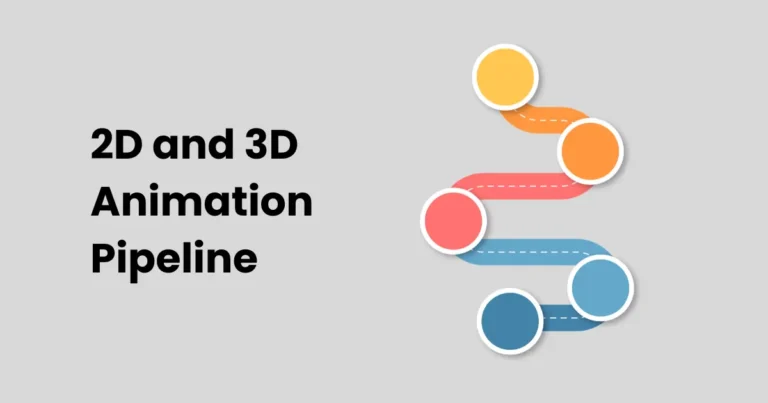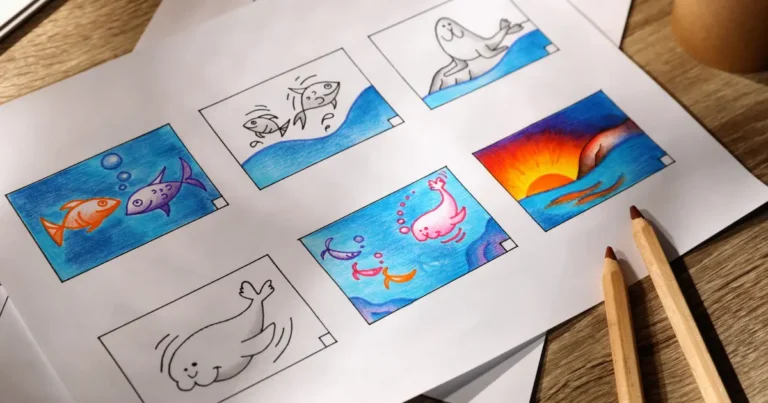Animation Club Activities | tips for kids and adults

Contents
- 1 Importance of Animation Clubs
- 2 Popular Animation Club Activities
- 3 Why These Activities Matter
- 3.1 Benefits of Participating in Animation Club Activities
- 3.1.1 1. Enhancing Creativity
- 3.1.2 2. Building Teamwork and Communication Skills
- 3.1.3 3. Gaining Technical Expertise
- 3.1.4 4. Expanding Career Opportunities
- 3.1.5 5. Improving Problem-Solving Abilities
- 3.1.6 6. Boosting Confidence and Self-Esteem
- 3.1.7 7. Networking with Like-Minded Individuals
- 3.1.8 8. Staying Updated with Industry Trends
- 3.1 Benefits of Participating in Animation Club Activities
- 4 How to Organize Animation Club Activities
- 4.1 1. Identify the Goals of Your Activities
- 4.2 2. Plan a Diverse Range of Activities
- 4.3 3. Schedule Regular Meetings
- 4.4 4. Gather the Necessary Resources
- 4.5 5. Involve Members in Planning
- 4.6 6. Promote Your Activities
- 4.7 7. Create a Welcoming Environment
- 4.8 8. Measure Success and Gather Feedback
- 4.9 Pro Tips for Organizing Animation Club Activities
- 5 Tips for Successful Animation Club Activities
- 5.1 1. Understand Your Members’ Interests
- 5.2 2. Set Clear Objectives
- 5.3 3. Plan Ahead
- 5.4 4. Incorporate Hands-On Learning
- 5.5 5. Encourage Collaboration
- 5.6 6. Provide Constructive Feedback
- 5.7 7. Keep Activities Fun and Creative
- 5.8 8. Leverage Technology
- 5.9 9. Invite Guest Speakers or Mentors
- 5.10 10. Showcase Members’ Work
- 5.11 11. Be Inclusive
- 5.12 12. Stay Updated with Trends
- 5.13 13. Monitor and Improve
- 5.14 Conclusion
Animation club activities are an excellent way for enthusiasts and aspiring animators to explore the exciting world of animation. These clubs serve as a hub for creativity, collaboration, and learning, providing members with hands-on opportunities to develop their animation skills. Whether you’re a student looking to enhance your artistic talents or a professional aiming to stay updated with the latest animation trends, joining an animation club can be incredibly rewarding.
In these clubs, activities range from basic workshops on storyboarding to advanced sessions on animation software. Members often participate in collaborative projects, character design challenges, and even animation competitions, fostering a sense of community and teamwork. Animation club activities not only help members improve their technical expertise but also ignite their creative potential, making them ideal for anyone passionate about bringing stories to life through animation.
By engaging in diverse animation club activities, participants can gain valuable experience, network with like-minded individuals, and prepare for a future in the dynamic animation industry. This vibrant environment makes animation clubs the perfect platform to learn, grow, and turn imagination into reality.
Importance of Animation Clubs
Animation clubs play a crucial role in nurturing talent, fostering creativity, and building a community of like-minded individuals passionate about the art of animation. These clubs are not just spaces for practicing animation skills—they are environments where members can collaborate, innovate, and grow both personally and professionally.
One of the primary reasons animation clubs are important is their ability to provide a structured platform for learning. Through various animation club activities such as workshops, challenges, and group projects, members can sharpen their technical skills and gain hands-on experience with tools and techniques used in the industry. These activities encourage experimentation and creative problem-solving, helping participants improve their craft in a supportive and inspiring environment.
Animation clubs also create networking opportunities. Members can connect with peers who share their interests, exchange ideas, and collaborate on projects. This network can be invaluable for aspiring animators, as it often leads to mentorship opportunities, portfolio collaborations, or even job referrals in the animation industry.

Furthermore, animation clubs contribute to personal development. Activities such as group projects and animation competitions teach essential soft skills like teamwork, communication, and time management. These skills are not only beneficial for animation careers but are also valuable in other areas of life.
For those with a serious interest in pursuing a career in animation, these clubs provide early exposure to industry practices. By participating in animation club activities, members can better understand the animation pipeline, stay updated with trends, and build a portfolio that showcases their creativity and technical abilities.
In summary, animation clubs are vital for developing technical, creative, and interpersonal skills. They offer a unique blend of education, collaboration, and community, making them essential for anyone eager to explore and excel in the world of animation.
Popular Animation Club Activities
Animation clubs are vibrant hubs for creativity and skill-building, offering a wide range of engaging activities. These activities are designed to inspire members, enhance their technical expertise, and foster collaboration. Below are some of the most popular animation club activities that attract both beginners and seasoned animators:

1. Storyboarding Workshops
Storyboarding is the backbone of any animation project, and workshops dedicated to this art form are a favorite among animation club activities. Members learn how to visually outline their stories, plan sequences, and create detailed frames that guide the animation process. These workshops often include hands-on practice, enabling participants to turn their ideas into cohesive visual narratives.
2. Animation Software Training
Many animation clubs host training sessions on industry-standard software like Adobe Animate, Blender, or Toon Boom Harmony. These sessions are essential animation club activities for members eager to master digital tools. Beginners can learn the basics, while advanced users can refine their skills or explore new features, keeping them up-to-date with technological advancements.
3. Character Design Challenges
Character design is a cornerstone of animation, and challenges focused on creating unique and expressive characters are a popular activity in animation clubs. Participants are tasked with designing characters based on specific themes, styles, or storytelling goals. These challenges encourage creativity and provide a platform for members to showcase their artistic flair.
4. Stop-Motion Animation Projects
Stop-motion animation is a fun and hands-on technique that often finds its place in animation club activities. Members collaborate to create short animations using physical materials like clay, paper, or everyday objects. These projects not only teach patience and precision but also allow participants to explore a different side of animation.
5. Group Animation Competitions
Group competitions are among the most exciting animation club activities. Members form teams to create short animations within a set timeframe. These events foster teamwork, problem-solving, and time management skills while providing a thrilling environment for participants to push their creative boundaries.
6. Guest Speaker Sessions and Industry Insights
Many animation clubs invite professionals from the animation industry to share their experiences and insights. These sessions are a valuable addition to animation club activities, giving members a glimpse into real-world animation practices and career advice.
7. Screening and Critique Sessions
Clubs often organize screenings of members’ work, where peers and mentors provide constructive feedback. These sessions help animators refine their skills and grow as artists by learning from others’ perspectives.
8. Themed Animation Projects
Working on projects based on specific themes is another popular activity. These projects can range from holiday-themed animations to animations inspired by historical events or current trends, allowing members to stretch their imagination and storytelling abilities.
Why These Activities Matter
Popular animation club activities are designed to cater to the diverse interests and skill levels of members. They provide a blend of learning, creativity, and fun, ensuring that everyone can grow while enjoying the process. These activities not only help members build their animation portfolios but also strengthen their sense of community within the club.
Benefits of Participating in Animation Club Activities
Engaging in animation club activities offers numerous benefits that extend beyond learning animation techniques. These activities provide a holistic experience that enhances personal, creative, and professional growth. Here are the key benefits of participating in animation club activities:

1. Enhancing Creativity
Animation club activities encourage members to think outside the box and experiment with new ideas. Whether it’s creating unique characters, crafting engaging storylines, or exploring innovative animation styles, these activities stimulate creative thinking and artistic expression. Members often discover their unique creative voice through these opportunities.
2. Building Teamwork and Communication Skills
Many animation club activities, such as group projects or competitions, involve collaboration. Members work in teams to brainstorm ideas, assign roles, and execute projects effectively. This collaborative environment helps participants develop essential teamwork and communication skills, which are invaluable in both animation careers and everyday life.
3. Gaining Technical Expertise
Participating in animation club activities provides hands-on experience with industry-standard tools and techniques. Members can learn how to use software like Blender, Adobe Animate, or Maya, as well as traditional animation methods like stop-motion. This technical expertise can significantly boost an animator’s confidence and proficiency.
4. Expanding Career Opportunities
Animation clubs often serve as a stepping stone for aspiring animators. By participating in animation club activities, members can build a strong portfolio showcasing their skills and creativity. Networking opportunities within the club, such as connecting with peers, mentors, or guest speakers, can also open doors to internships, freelance projects, or full-time roles in the animation industry.
5. Improving Problem-Solving Abilities
Animation often involves overcoming creative and technical challenges, from perfecting movement to resolving software glitches. Animation club activities help members sharpen their problem-solving skills as they navigate these challenges. This ability to troubleshoot and adapt is highly beneficial in any professional setting.
6. Boosting Confidence and Self-Esteem
Seeing their ideas come to life through animation club activities gives members a sense of accomplishment. Whether it’s completing a storyboard, animating a short scene, or winning a club competition, these achievements build confidence and motivate members to take on bigger challenges.
7. Networking with Like-Minded Individuals
Animation club activities bring together individuals with shared interests, fostering a sense of community. Members can exchange ideas, learn from each other, and form lasting friendships. This network can be an invaluable resource for collaboration and support throughout their animation journey.
8. Staying Updated with Industry Trends
Through guest speaker sessions, workshops, and discussions, animation club activities keep members informed about the latest trends and developments in the animation world. This knowledge helps participants stay competitive and prepared for a future in the industry.
Participating in animation club activities is more than just an educational experience—it’s an opportunity to grow as an artist and an individual. From enhancing technical skills to building meaningful connections, these activities empower members to pursue their passion for animation with confidence and creativity.
How to Organize Animation Club Activities
Organizing animation club activities requires careful planning, creativity, and coordination to ensure they are engaging, educational, and enjoyable for participants. Whether you’re starting a new club or managing an existing one, these steps will help you successfully organize animation club activities that resonate with your members.

1. Identify the Goals of Your Activities
Before planning, establish clear objectives. Are you aiming to teach new skills, foster creativity, or promote teamwork? Defining your goals will guide the selection and design of your animation club activities, ensuring they align with the interests and skill levels of your members.
2. Plan a Diverse Range of Activities
To keep members engaged, organize a mix of activities that cater to different aspects of animation. For instance:
- Skill-building workshops (e.g., storyboarding, animation software tutorials)
- Creative challenges (e.g., character design competitions)
- Collaborative projects (e.g., group animations or stop-motion videos)
- Educational sessions (e.g., guest speaker events or industry trend discussions)
Diversity ensures that all members, regardless of their experience, find something valuable and enjoyable.
3. Schedule Regular Meetings
Consistency is key to maintaining enthusiasm. Set a schedule for regular meetings where animation club activities can take place. Weekly or bi-weekly sessions are ideal to allow members enough time to prepare and participate actively.
4. Gather the Necessary Resources
Ensure you have the tools and materials needed for your activities. This might include:
- Computers or tablets with animation software
- Art supplies like sketchpads, pencils, and markers
- Cameras and props for stop-motion animation
- Projectors or screens for screenings and presentations
Check with your members to see if they can contribute any resources, or collaborate with schools, colleges, or local organizations for support.
5. Involve Members in Planning
Engage club members by involving them in the planning process. Allow them to suggest ideas for animation club activities or vote on upcoming events. This inclusive approach fosters a sense of ownership and ensures activities align with members’ interests.
6. Promote Your Activities
To ensure good participation, promote your animation club activities effectively. Use social media, posters, and newsletters to spread the word. Highlight the benefits of joining, such as learning new skills, networking, or showcasing work.
7. Create a Welcoming Environment
Encourage collaboration and make your club a safe space for sharing ideas and feedback. Activities like critique sessions or collaborative projects thrive in an environment where members feel respected and supported.
8. Measure Success and Gather Feedback
After each activity, gather feedback from members to understand what they enjoyed and what could be improved. Use surveys or informal discussions to identify areas for enhancement. Continuously refine your approach based on their input.
Pro Tips for Organizing Animation Club Activities
- Start small: If your club is new, begin with simple activities and gradually introduce more complex ones as members gain confidence.
- Collaborate with experts: Invite guest speakers or professional animators to lead sessions and inspire members.
- Celebrate achievements: Organize events like animation showcases or award ceremonies to recognize members’ efforts and creativity.
Organizing animation club activities is a rewarding endeavor that benefits both organizers and participants. By planning thoughtfully, involving members, and fostering a creative atmosphere, you can create a thriving club that inspires and empowers its members to explore the world of animation.
Tips for Successful Animation Club Activities
Organizing successful animation club activities requires thoughtful planning, effective execution, and attention to the interests of members. To ensure your activities are engaging, impactful, and fun, consider these tips:

1. Understand Your Members’ Interests
- Conduct surveys or informal discussions to learn what your members want from animation club activities.
- Cater to a mix of skill levels, ensuring both beginners and experienced animators feel included.
2. Set Clear Objectives
- Clearly define the purpose of each activity, such as enhancing a particular skill, encouraging creativity, or fostering teamwork.
- Share the goals with members beforehand to align expectations.
3. Plan Ahead
- Develop a schedule that outlines activities for the semester or year.
- Allow enough time to prepare resources and ensure smooth execution.
4. Incorporate Hands-On Learning
- Ensure activities are interactive and allow members to actively participate.
- Include workshops, live demos, and collaborative projects that let members apply what they’ve learned.
5. Encourage Collaboration
- Organize group-based animation club activities, such as creating short films or storyboards.
- Promote teamwork and idea-sharing to build a sense of community among members.
6. Provide Constructive Feedback
- Host critique sessions where members can share their work and receive supportive, constructive feedback.
- Focus on encouragement to build confidence while helping members improve.
7. Keep Activities Fun and Creative
- Balance technical learning with fun challenges, like theme-based animations or character design contests.
- Infuse a sense of playfulness to keep members motivated and engaged.
8. Leverage Technology
- Introduce members to animation software and tools commonly used in the industry, such as Blender, Toon Boom, or Adobe Animate.
- Provide tutorials and resources to help members navigate these tools effectively.
9. Invite Guest Speakers or Mentors
- Arrange sessions with professionals from the animation industry to inspire members and provide real-world insights.
- Allow members to ask questions and learn from their experiences.
10. Showcase Members’ Work
- Organize screenings or exhibitions to celebrate members’ creations.
- Publicly recognize their achievements through awards, social media shoutouts, or club newsletters.
11. Be Inclusive
- Create an environment where all members feel welcomed and valued, regardless of their skill level or background.
- Encourage open dialogue and respect during activities.
12. Stay Updated with Trends
- Incorporate modern animation techniques and trends into your activities to keep them relevant and exciting.
- Explore topics like VR animation, motion graphics, or hybrid animation styles.
13. Monitor and Improve
- Regularly gather feedback from members to assess the effectiveness of your animation club activities.
- Make adjustments based on their suggestions to improve future activities.
Successful animation club activities are those that engage members, nurture their creativity, and help them grow as animators. By understanding their interests, planning interactive sessions, and fostering a supportive environment, you can ensure that your club remains a hub of inspiration and learning.
Conclusion
Animation club activities play a vital role in nurturing creativity, fostering collaboration, and enhancing technical skills among members. By offering a platform for hands-on learning and creative expression, these clubs empower participants to explore the art and science of animation in a supportive and engaging environment. From skill-building workshops to fun challenges, animation club activities provide a unique blend of education and entertainment that inspires members to push their boundaries and discover their true potential.
Beyond skill development, these activities also cultivate essential life skills such as teamwork, problem-solving, and communication, preparing members for personal and professional success. By staying organized, promoting inclusivity, and encouraging innovation, animation clubs can create memorable experiences that leave a lasting impact. Whether you’re a beginner or a seasoned animator, participating in or organizing animation club activities is a rewarding journey that unlocks endless creative possibilities and builds a strong foundation for a future in animation.






